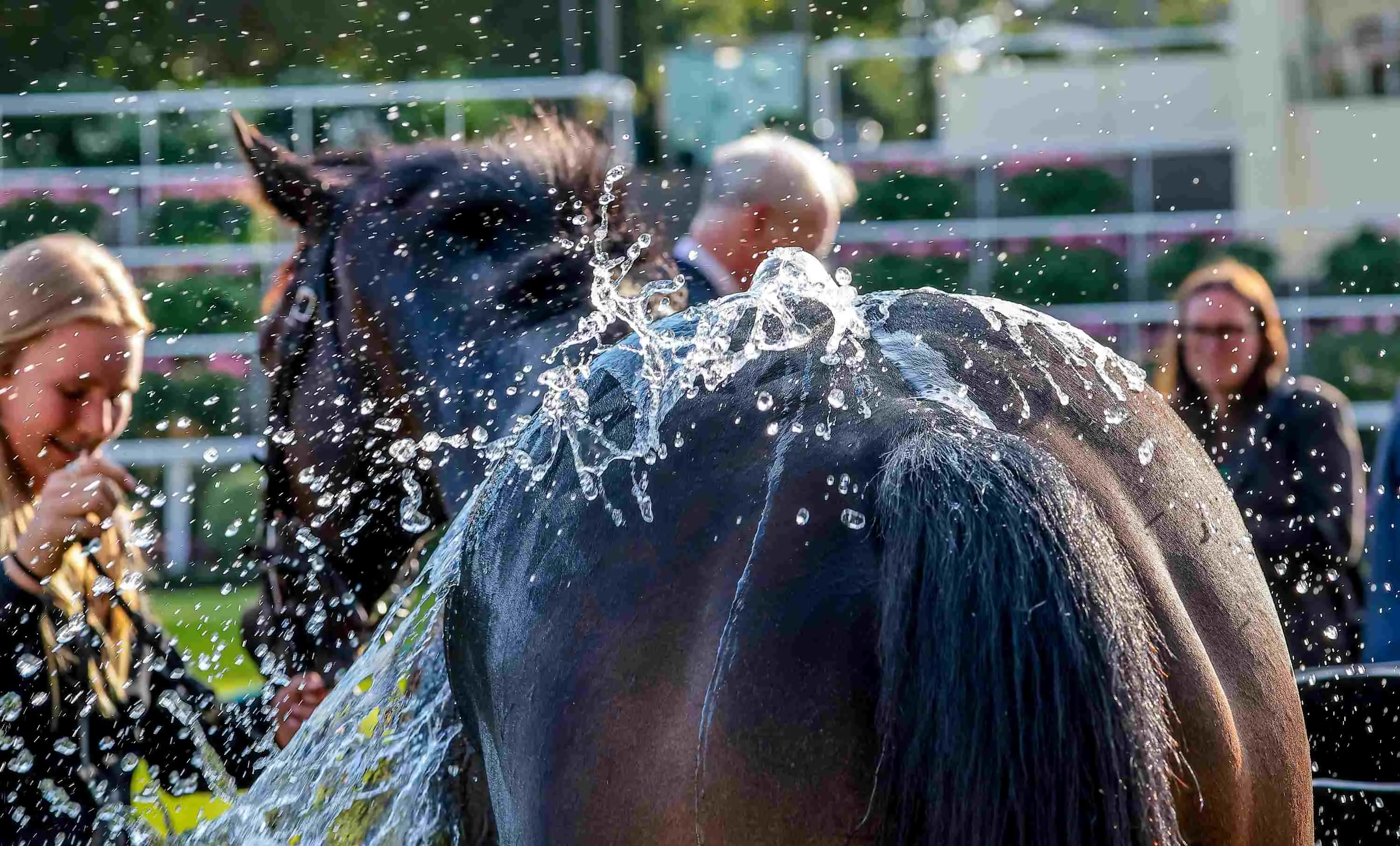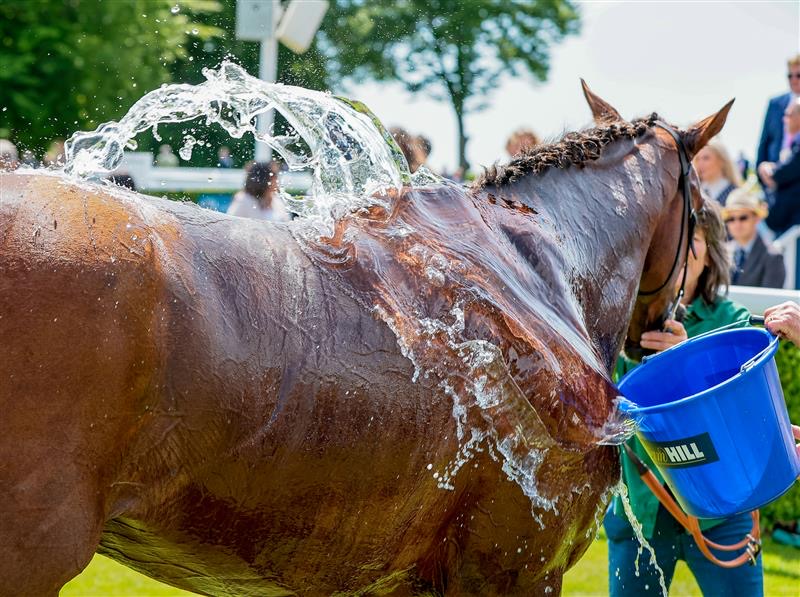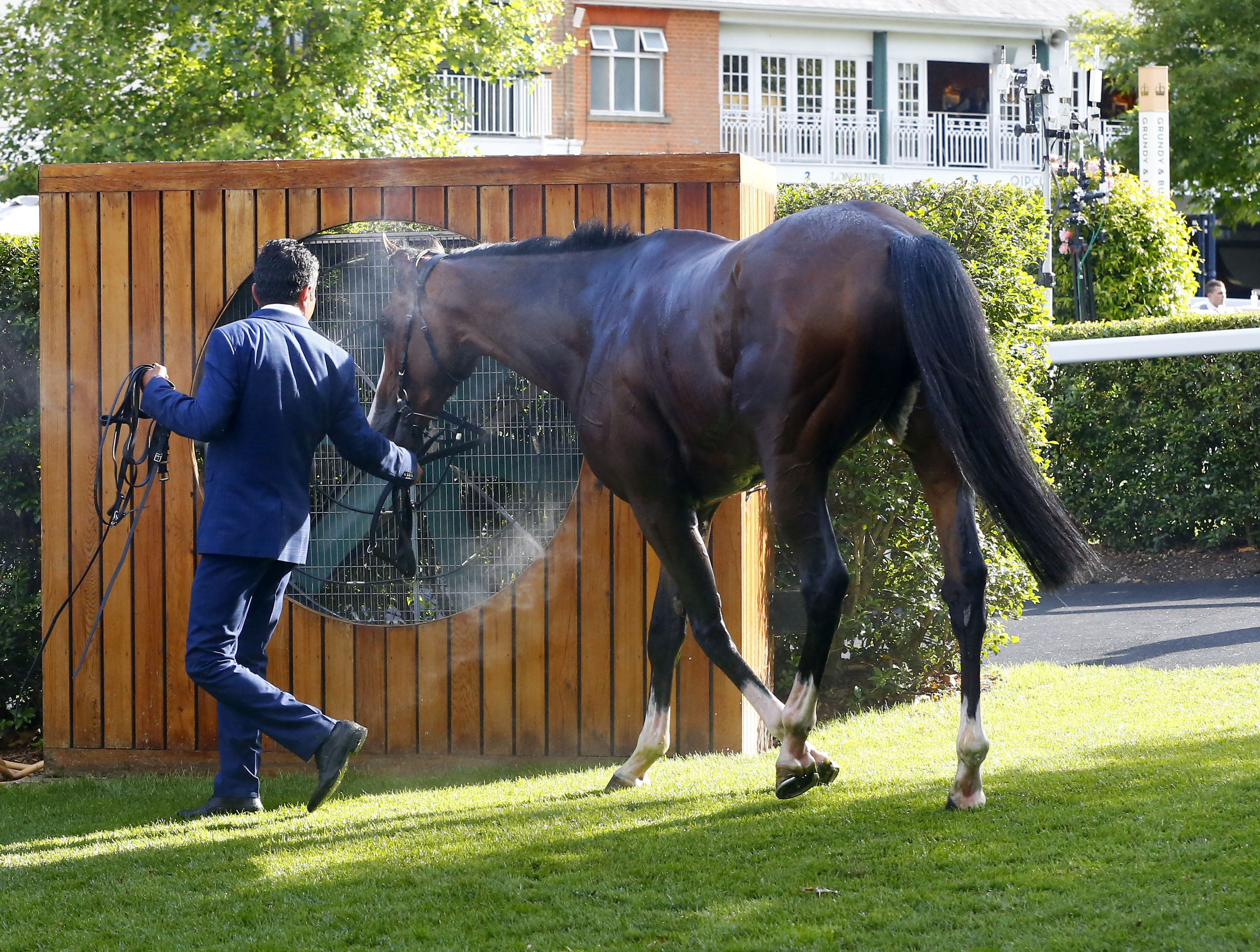HOW DOES HOT WEATHER AFFECT RACEHORSES?
When the temperature rises, so do the efforts of everyone to ensure that every equine athlete is still able to perform safely.

Q: Is it safe for Thoroughbreds to race in hot weather?
A: The Thoroughbred is a particularly adaptable and versatile breed of horse, allowing them to regularly perform in all climates. Racing takes place in many jurisdictions across the world where high temperatures are the norm, such as the Middle East, Australia and South Africa. Due to their physical adaptations, with sufficient time to acclimatise – a few days to a couple of weeks in most cases – a horse can perform safely in very warm weather, whether at home or abroad.
Q: What is heat stress and how is it avoided?
A: Thoroughbreds exert incredible power while galloping at top speed. This can result in a rise in body temperature of approximately 1°C per minute. Horses primarily cool themselves back to a resting temperature through sweating. Heat stress occurs when there is an excessive increase in a horse’s core body temperature, which is not reversed through adequate cooling. Left untreated, it can be fatal. The process of cooling through sweating can be replicated by the application of cold water. This is why, on race days, provision of water is always a priority, and why every individual involved in racehorse care, from racecourse staff, trainers, jockeys and vets, is aware of the signs of overheating and ensure any horses showing warning signs of heat stress are cooled as quickly as possible.

Q: Is it ever too hot to race?
A: Yes, if the Met Office issues a Red weather warning for heat for an area that contains a racecourse, British racing rules stipulate the racing must be abandoned. This is to ensure the safety and wellbeing of not only racehorses, but all staff and potential visitors.
Q: What happens if there racing scheduled in an Amber Weather Warning area?
A: In these instances, all British racecourses must follow a series of enhanced measures and protocols to reduce the risk of heat stress to both horses and people. This could include altering race times and changing race orders to lower the risk of heat stress to horses, ensuring adequate water provision at the course, minimising parade times, and additional vet checks. If a racecourse is unable to meet these measures, for whatever reason, racing will not take place.
Q: Is it safe to travel horses in hot weather?
A: In cases of extreme heat, racehorse trainers are not permitted to travel horses through areas that have Red Weather Warnings for heat in place. During periods of hot weather, trainers are advised to travel horses at cooler times of the day and consider travelling fewer horses together, to allow better airflow in the transporter. Extra measures also include monitoring the temperature within the horse’s compartment and aiming to keep it stable, ideally below 18°C, and ensuring that horses are kept from exposure to direct sunlight.
Q: What is the quickest way to cool a horse down?
A: With a large surface area, the quickest and most effective way to cool a horse is by applying cold water across their body, and ideally, walking the horse to create airflow over their skin. This is why you might see buckets of water poured over a horse repeatedly after a race on a warm day. The colder, new water displaces the previous water that becomes heated through contact with the horse’s skin. In fact, racecourses will have thousands of litres of cold water available at multiple points when racing during hot weather, and many courses have also invested in misting fans, which aids further in creating a cooler micro-climate around the horse and a breeze to accelerate evaporation.

Q: What do jockeys do to help in hot weather?
A: Jockeys play a vital role in ensuring the welfare of racehorses in all weather conditions. In very hot weather, jockeys will keep ‘warm-ups’ to a minimum pre-race, to minimise the potential for heat stress. Jockeys will often assist in the cooling process by pouring water over the horse immediately after finishing the race and may dismount earlier than normal to allow the groom to remove the saddle and cool the horse down further. In rare cases, if they feel a horse is not tolerating the conditions well or exhibiting signs of heat stress, a jockey must pull up (stop racing immediately) and can be penalised within the rules of racing for not doing so.
Q: What else is done off the track?
A: Everyone involved in racehorse care takes their responsibility very seriously. As well as rules to ensure the safe travel and management of racehorses on racecourses in hot weather, trainers and stable staff will ensure that horses are kept comfortable. Racecourse vets provide a further level of care, checking and monitoring horses throughout the day for signs of overheating and responding where required.
Interested to learn more about how racehorses are kept cool in hot weather? Click here. To read more about British racing’s approach to managing race days during periods of hot weather, click here.